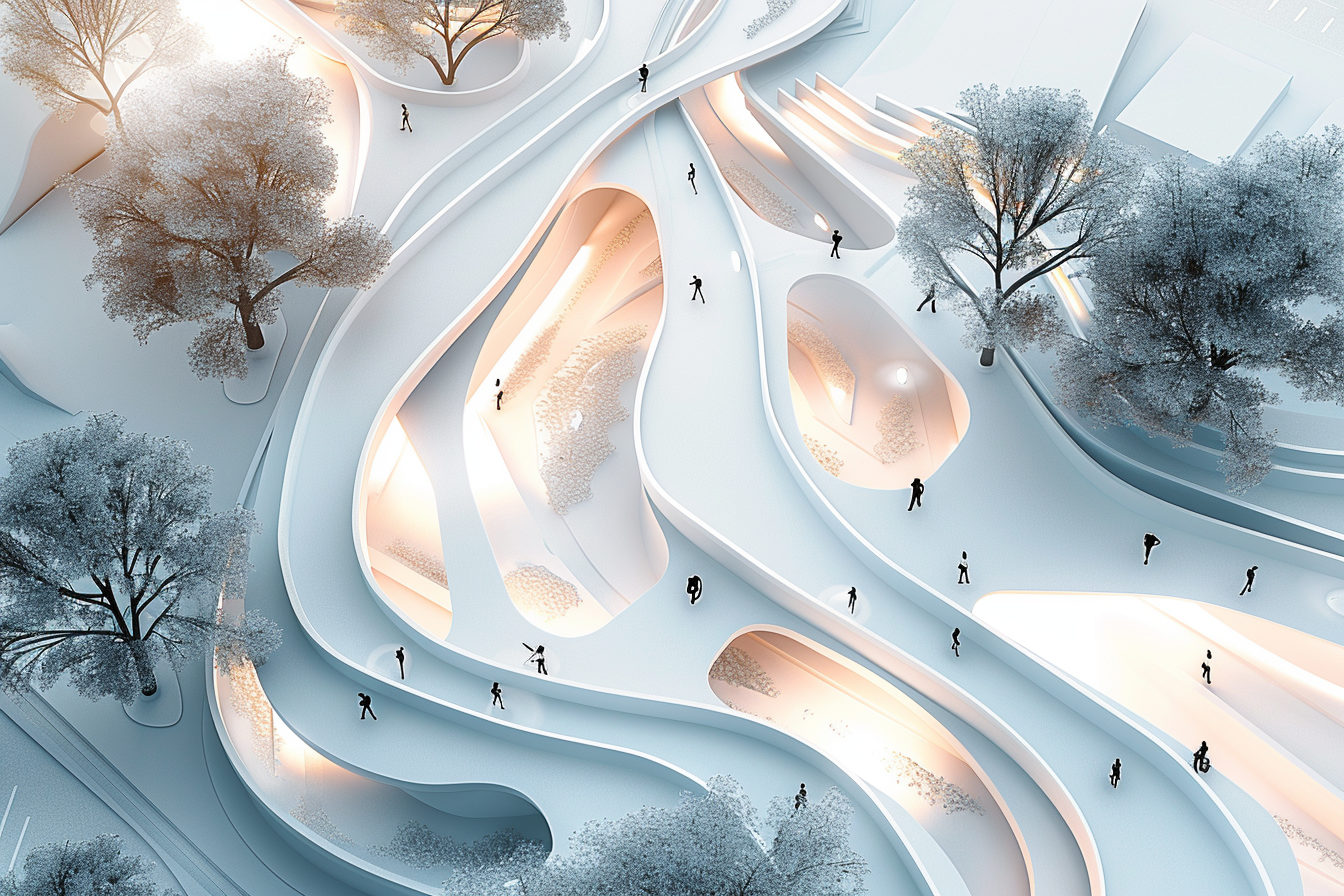Circulation and Flow

1. Introduction Circulation and flow in architecture refer to the movement of people through space. This concept plays a pivotal role in user experience, safety, and overall functionality of a building. A well-planned circulation system guides users seamlessly through spaces, while poor circulation can lead to confusion, inefficiency, or even danger in emergency scenarios. For recent architecture graduates transitioning into practice, understanding circulation goes beyond drawing corridors and staircases. It involves anticipating human behavior, responding to building use, and integrating spatial logic within the design. This article explores principles, strategies, tools, and real-world applications of circulation design.
2. Fundamentals of Circulation Design
Definition: In architectural terms, circulation encompasses the pathways people use to navigate through a building. These include horizontal (corridors, walkways) and vertical (stairs, elevators, ramps) components.
Types of Circulation:
- Primary circulation: Main routes used by the majority of users (e.g., entrance lobbies, main corridors).
- Secondary circulation: Paths branching from primary routes to private or less-used spaces (e.g., offices, storage rooms).
- Vertical circulation: Elevators, stairs, escalators.
Hierarchy: Clear circulation hierarchy improves wayfinding and spatial orientation.
3. Key Principles for Intuitive Movement
Legibility: Spaces should intuitively guide users through form, lighting, signage, and spatial arrangement.
Continuity: Circulation routes should be uninterrupted and smooth, avoiding abrupt stops or confusing intersections.
Zoning: Effective zoning separates public, semi-public, and private areas, making movement feel natural and purposeful.
Visibility: Transparency and views across spaces help users understand orientation and available paths.
Accessibility: Circulation must comply with accessibility codes (e.g., ADA) to serve all users regardless of ability.
Pro Tip: Use natural light or changes in materiality to highlight key circulation axes. This helps subconsciously orient users.
4. Tools and Techniques for Effective Circulation Planning
- Bubble Diagrams: Early-stage sketches showing functional zones and how they interconnect.
- Adjacency Matrices: Tools to prioritize which spaces need close physical proximity.
- Path Diagrams: Lines or arrows showing anticipated user movement through space.
- Programmatic Zoning Diagrams: Color-coded layouts illustrating spatial function and user flow.
Pro Tip: Overlay circulation diagrams on top of structural grids early in the design to ensure feasibility and alignment.
5. Contextual Considerations
Climate:
- In hot climates, internal shaded corridors reduce heat exposure.
- In cold climates, enclosed, insulated circulation minimizes heat loss.
Urban vs. Rural:
- Urban buildings may need to accommodate complex vertical circulation due to limited footprint.
- Rural buildings often prioritize horizontal movement and open transitions.
Building Type and Scale:
- Hospitals require clear, efficient circulation for patients and staff.
- Museums prioritize experiential movement through exhibits.
- Schools emphasize separation of different age groups or functions.
Budget Constraints:
- Prioritize efficient, multi-use circulation paths in cost-sensitive projects.
6. Case Study 1: The Guggenheim Museum, New York (Frank Lloyd Wright) The Solomon R. Guggenheim Museum in NYC exemplifies a bold approach to circulation. Instead of a traditional series of galleries, Wright designed a continuous ramp spiraling upward around a central atrium. Implementation:
- Primary circulation is the spiral ramp.
- Vertical movement is integrated within the exhibit path.
- Natural light in the atrium aids orientation.
Effectiveness:
- Unique visitor experience.
- Challenges include fatigue from the incline and exhibition design constraints.
7. Case Study 2: Seattle Central Library (OMA/Rem Koolhaas) This library redefined circulation by organizing program areas into “platforms” connected by a continuous ramp system known as the “Books Spiral.” Implementation:
- Ramps allow users to navigate collections without stairs.
- Transparent elevators and escalators provide alternative vertical movement.
- Clear visual connections and signage improve legibility.
Effectiveness:
- Visually and physically engaging.
- Encourages exploration.
- Complex geometry required rigorous circulation mapping.
Pro Tip: In public buildings, layered circulation (main route + secondary meandering paths) offers both efficiency and flexibility.
8. Case Study 3: High Line, New York City (James Corner Field Operations + Diller Scofidio + Renfro) Though not a building, the High Line offers an urban-scale case study of circulation-as-experience. Implementation:
- A linear path on a repurposed railway line.
- Subtle grade changes, sightlines, and pauses shape movement.
- Entrances placed strategically for intuitive access.
Effectiveness:
- Encourages walking, discovery, and public engagement.
- Connects disparate urban zones fluidly.
9. Integrating Circulation into Design Workflow
- Start Early: Consider circulation during the concept stage, not post-space planning.
- Iterate: Test multiple circulation strategies and gather feedback.
- Coordinate: Align circulation with structural, mechanical, and code requirements.
- Prototype: Use physical or digital walkthroughs to simulate user experience.
Pro Tip: In Revit or BIM software, use color-coded 3D diagrams to analyze circulation clarity from different user perspectives.
10. Conclusion Effective circulation design is a cornerstone of good architecture. It guides movement, shapes experience, and supports the overall function of a space. For recent graduates, understanding the balance between intuitive flow, code compliance, and contextual constraints is essential. By studying real-world precedents, using analytical tools, and continuously testing designs, architects can create environments where movement feels natural and meaningful. Whether designing a museum, school, or urban walkway, circulation remains a dynamic element that breathes life into architecture.